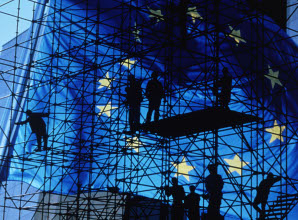Economics, EU – Baltic States, Funds
International Internet Magazine. Baltic States news & analytics
Thursday, 25.04.2024, 08:59
EU Baltic Sea Strategy: one year on
 Print version
Print version |
|---|
The European Council, in its meeting on 29-30 October 2009, adopted the EU Strategy for the Baltic Sea Region (EUSBSR), the first macro-regional strategy in the EU. It called on all relevant actors to act speedily and ensure its full implementation.
The General Affairs Council on 26 October 2009 adopted detailed conclusions on the Strategy, inviting the European Commission inter alia "to report on the implementation of the agreed actions and the evaluation of the results, and make the necessary updates of the Action Plan, as well as inform the Council on a regular basis of the progress made".
While the Council has requested a full report on the Strategy in 2011, the Commission decided to make an initial draft report earlier in order to present overall progress and lessons learned from the period 1 November 2009 to 30 June 2010.
Since the EU enlargement of 2004, challenges facing the Baltic Region have increased. Escalating environmental threats, gaps in economic development and poor transport accessibility are issues which need to be tackled urgently. Many of these problems can only be addressed through better coordination and joint action; the EU institutions are facilitating the optimal progress.
Good progress
One year into the implementation phase of the EU Strategy for the Baltic Sea Region, the Commission is able to note some real achievements and benefits from the Strategy in many different areas.
New projects addressing identified regional priorities are already making contributions to reducing high levels of pollution in the Baltic Sea, improving transport systems and energy networks, and reinforcing protection from major emergencies at sea and on land. For example, several new macro-regional initiatives are now in place to tackle challenges as diverse as the increase of algae in the Baltic Sea, illegal ship emissions and inadequate procurement practices in health care systems.
The Strategy is also giving momentum to existing projects, for instance, on energy cooperation, which is an extremely important issue for the region. A key goal for the region is energy security, which means proper energy supply and distribution. The close integration of the Strategy with the Baltic Energy Market Interconnection Plan (BEMIP) is helping to secure a speedy integration of the three Baltic States into the European energy market.
Strategy aims
The Strategy aims at coordinating action by Member States, regions, the EU, pan-Baltic organisations, financing institutions and non-governmental bodies to promote a more balanced development of the Region. The four cornerstones of the Strategy are to make this part of Europe more:
Environmentally sustainable (e.g. reducing pollution in the sea);
Prosperous (e.g. promoting innovation in small and medium enterprises);
Accessible and attractive (e.g. better transport links);
Safe and secure (e.g. improving accident response).
Strategy: perspectives
The Baltic Sea Strategy has marked the beginning of a new way of working and cooperating across borders. The results can be seen in the creation of new and more inclusive macro-regional policy discussions and networks. Notable examples include the Strategy's Priority Areas on Fisheries, where the new BaltFish network strengthens the cooperation of fisheries authorities in the Region, and on Transport, where a macro-regional response to the on-going revision of the EU's TEN-T network is now being prepared.
Additional information on:
European Union: Regional Policy website, and
http://ec.europa.eu/regional_policy/cooperation/baltic/index_en.htm







 «The Baltic Course» Is Sold and Stays in Business!
«The Baltic Course» Is Sold and Stays in Business!

